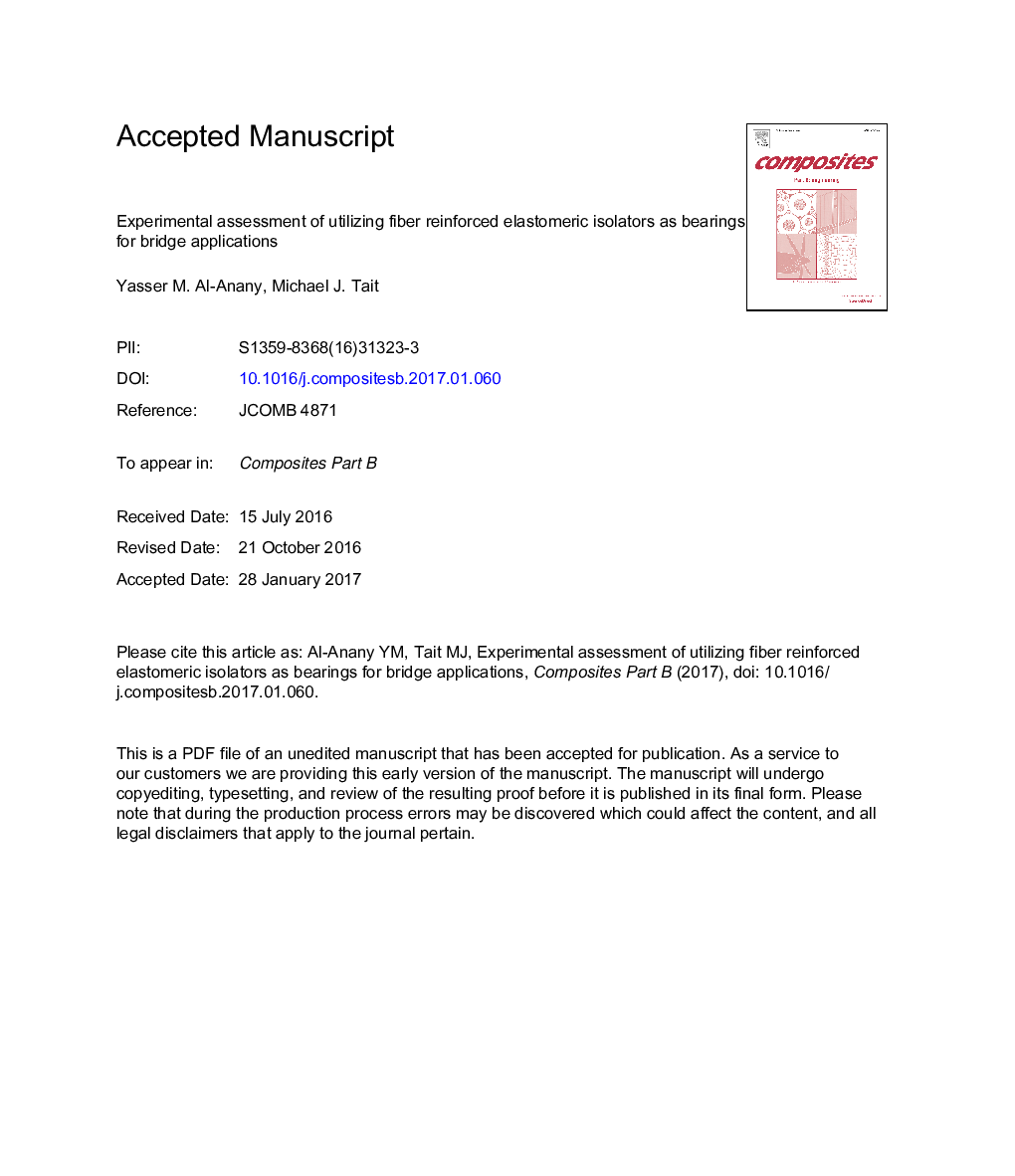| Article ID | Journal | Published Year | Pages | File Type |
|---|---|---|---|---|
| 5021405 | Composites Part B: Engineering | 2017 | 36 Pages |
Abstract
Fiber reinforced elastomeric isolators (FREI) can be implemented in a variety of structures, including buildings and bridges. A FREI consists of alternating layers of elastomer and fiber fabric (often carbon fiber). The main role for the fiber reinforcement is to limit the bulging of the elastomer layers, and is the dominant parameter affecting the vertical stiffness. Compared to tradition steel-reinforced elastomeric isolators (SREI), the use of fabric reinforcement could potentially lead to a substantial reduction in both weight and manufacturing costs. To date, FREI have been tested under either vertical loading or combined vertical and lateral loading. Although, these loading scenarios are typically sufficient for building applications, extending the use of FREI to bridges requires an understanding of their behaviour under rotational deformation. This paper presents results from an experimental study conducted to 1) investigate the behaviour of FREI under different types of loads/deformations expected in bridge applications and; 2) determine the viability of FREI as bridge bearings. The test program covered a range of axial loads, lateral displacements as well as angles of rotations. In general, under a different of loading scenarios, U-FREI has shown considerable success in resisting loads and accommodating deformations with no damage/delamination of the isolators observed.
Related Topics
Physical Sciences and Engineering
Engineering
Engineering (General)
Authors
Yasser M. Al-Anany, Michael J. Tait,
